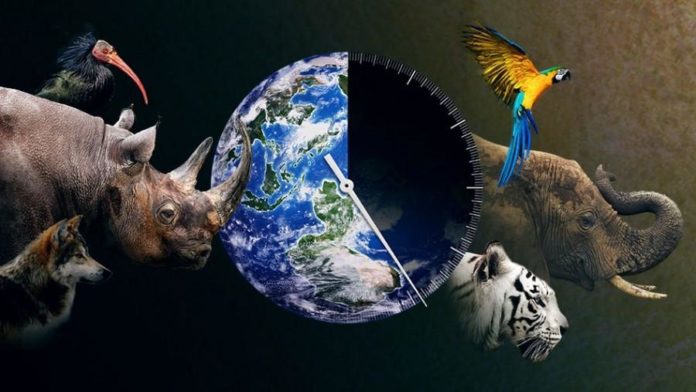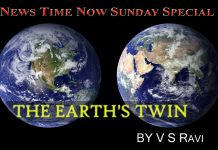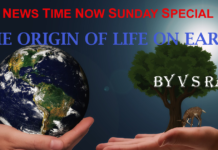” We need another and a wiser and perhaps a more mystical concept of animals. Remote from universal nature and living by complicated artifice, the man in civilization surveys the creature through the glass of his knowledge and sees thereby a feather magnified and the whole image in distortion. We patronize them for their incompleteness, for their tragic fate for having taken form so far below ourselves. And therein do we err. For the animal shall not be measured by man. In a world older and more complete than ours, they move finished and complete, gifted with the extension of the senses we have lost or never attained, living by voices we shall never hear. They are not brethren, they are not underlings: they are other nations, caught with ourselves in the net of life and time, fellow prisoners of the splendour and travail of the earth. ” HENRY BESTON
It is an unfortunate fact but nevertheless true that by the end of this decade we could well be losing one animal or plant species per hour. According to some estimates by the year 2030 we may have seen the last of one million of Earth’s five to ten million species.
No scientist would like to see any plant or animal species, no matter how lowly and obscure become extinct. This is the sentiment that provides the motivation for all activities aimed at the conservation of plant and animal life on this planet.
It is however rather ironical and perhaps even sad that the question is not how to save all these species; we just do not have the resources to save more than a tiny fraction of those that are endangered. The harsh and somewhat unethical question is rather which species are essential and which owing to our limited resources should quietly be allowed to die off. In other words, we must decide what each species is worth to us in terms of money, ecological value and relevance to human survival. There is an urgent need to assess their relative importance.
First, let us take a look at economic implications. One Kilogram of ivory fetches about 2100 American dollars in the illegal market in Hong Kong. Therefore an African Elephant carrying 10 Kgs. of tusks is worth about 21000 American dollars to a Far East trader. If we add to this, the value of elephant’s flesh as edible meat, legs as an item of furniture (stools ) and its hide for making wallets, briefcases and wall decorations, such a tusker would be worth about 50000 dollars
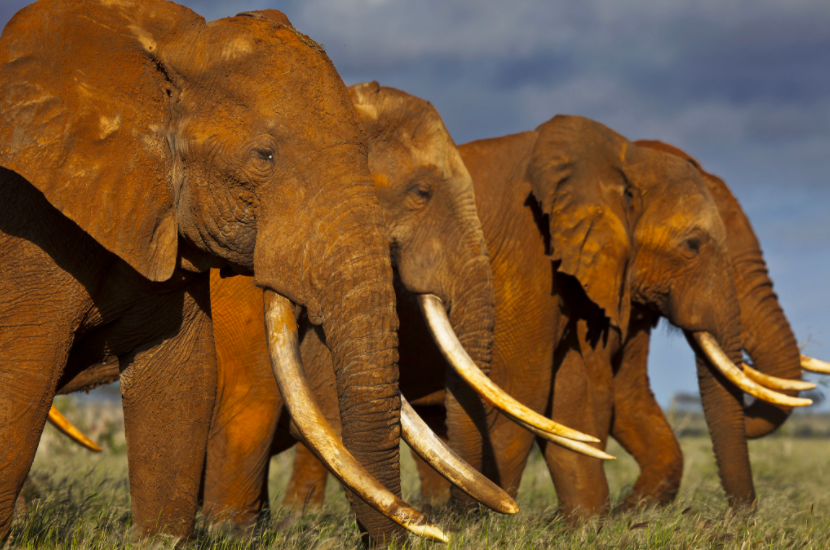
A Rhino is worth even more. In the Far East, its horn( which is just matted hair) is regarded as an aphrodisiac which improves the quality of performance as well as frequency, a belief that has no scientific basis. However, it is sought after by lecherous Chinese business tycoons who are willing to pay up to $6000/00 per kilogram.
In some places, Rhino horns are in demand as dagger handles. The horn’s phallic shape is thought to confer on its owner enhanced sexual powers. Such daggers, often selling at incredible prices, are presented to youth in the Middle East at the rites celebrating their initiation into manhood. The prices in the Middle East are comparable to those in Hong Kong
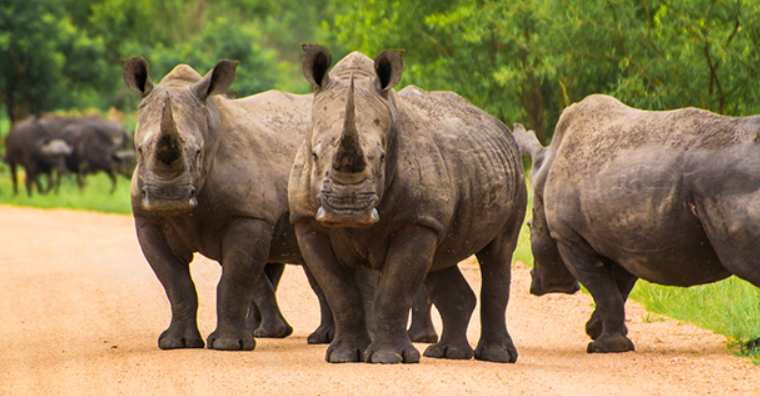
However there is another compelling reason for keeping animals. A good portion of Kenya’s safari tourist trade worth about $ 1.6 billion every year is paid by people who come from all over the world just to have a glimpse of the Lions, Elephants, Rhinos and Leopards in their natural habitat. No artificially created Zoo or park can capture the primaeval atmosphere of Tsao and Serengeti. This brings us to the question whether we are happy to suppose that someday in the not too distant future our great-grandchildren may never be able to see an elephant, the lion and the tiger except in a picture book, just as we look at pictures of the tyrannosaurus( the largest and most ferocious dinosaur), which roamed the earth for 60 million years. Some scientists are of the view that dinosaurs suddenly went extinct about 65 million years ago, after having lived on Earth for about 165 million years, when an asteroid collided against the Earth.
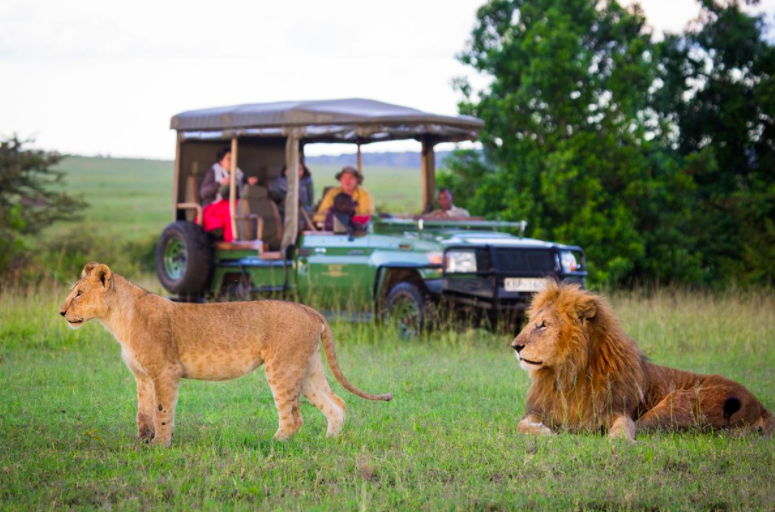
To sit by the side of a campfire in the bush, to hear the roar of a lion in the stillness of the night, to watch a crocodile stealthily glide into the jungle swamp, to see a million Famingoes spreading a blanket of pink across the horizon this is the very stuff of adventure.
Great as the attractions of “rock-built” cities are, neither the giddy skyline of Manhattan nor the blinding glare of the Ginza’s neon lamps can give us the same sense of awe and wonder as Ngoro Ngoro, cut off from evolution and the march of time. East Africa’s Lions and tigers account for some substantial portion of millions of dollars in tourist revenues which when translated in terms of basic economics even the best racehorses do not bring.
To these one must add the leisure time that people all over the world devote to watching animals such as Leopards in special Television shows. If this TV time is priced at two dollars an hour and if about a million people watch a short half-hour film the cost works out to two million dollars!
Yet another kind of value depends on the extraction of drugs (valued at five billion dollars a year) from animals and plants, representing half the drugs we use. The Periwinkle, tropical plant yields two highly effective anti-cancer drugs whose worldwide sales total 35 million dollars a year. A Mexican forest plant Dioscorea Yam yields the drug from which a contraceptive pill the basis of a billion-dollar a year industry is made.
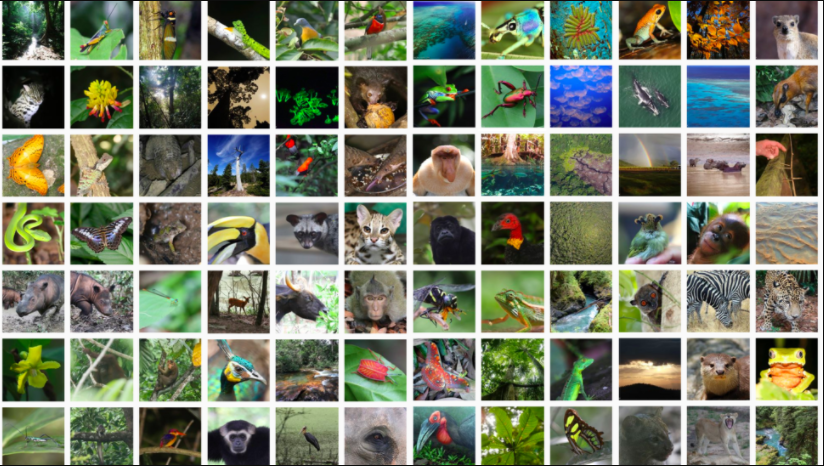
Many insects are no doubt regarded as pests. But some of them also kill off crop-destroying creatures and play a useful role in modern agriculture. In Florida, in the United States, a few years ago, citrus growers imported, for 35000 dollars, three species of parasitic wasps which live off pests and saved crop worth about 35 million dollars a year.
Thus animals and plants offer mankind monetary, medical and other kinds of value. Many of these survival benefits have become evident only recently.
But with our growing awareness of these benefits comes an unpleasant and difficult responsibility. We will have to soon carryout “risk-benefit” calculation to decide which species we shall help to survive and which we shall condemn by withholding protection. We will not find the task easy. We will be tempted constantly to make exceptions to devote precious resources to saving just one more endangered species. But then how many exceptions can we afford to make without jeopardizing the future of humanity
This moral dilemma is similar to that faced by surgeons who in the battlefield while dealing with the rows of wounded soldiers must resort to what is described as “triage” i.e., they must decide which patients are well enough to be ignored, which are too far gone to benefit from treatment and which may recover if given close and prompt attention. In the same manner, we would have to carefully work out a scale of descending priorities for protecting threatened chosen species.
But we must, however, admit that our “risk-benefit” calculations are entirely subjective and do not take into account the views of our “poor relations”. After all who has given us the right to decide that a particular species can be sacrificed in the larger interest of other species. Suppose another species more highly evolved than homosapiens were to decide against protecting us on similar considerations, how would we react? Such moral issues are sure to cause us many sleepless nights! Earth does not belong to man alone.
“They say the Lion and the Lizard keep
The Courts where Jamshyd gloried and drank deep:
And Bahram, that great Hunter-the
Wild Ass Stamps o’er his Head, and he lies fast asleep.”
—Edward Fitzgerald in The Rubaiyat of Omar Khayyam






























